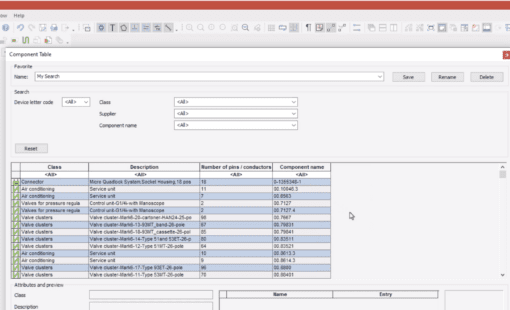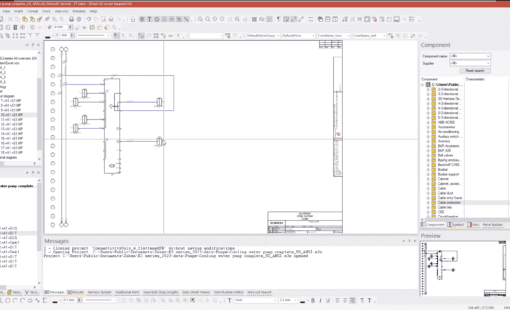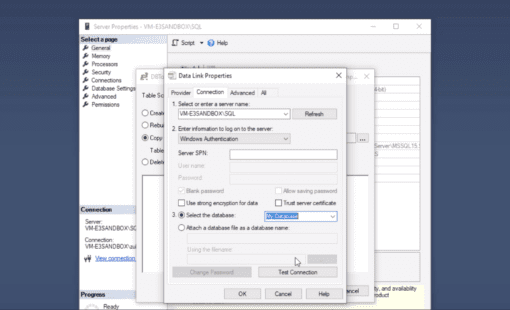DAMA, Design Anywhere Manufacture Anyway (ok, so perhaps not anywhere!) is one of those buzz words/phrases that can mean so much – but really what’s behind this grand name? And more to the point, what implications does it have on the electronics design process?
What does DAMA mean for the electronics industry?
Maybe you know this term well, but for those that don’t let me start with a basic intro.
The globalization of the electronics industry has brought many challenges for companies that produce electronic products, not least the nightmare of how to share information across the enterprise and with design and manufacturing partners who may be located anywhere across the globe. Forget the challenge of time differences, think about the basic language differences and then technical language differences – and that’s me only scratching the surface.
The crux of this is, without effective sharing of information, you can get into a whole lot of mess. Confusion prevails, which means that as a company you are slow to respond… which is bad all round.
More about information sharing
It’s not just a matter of setting up an information network, you might need to be able to:
- Move your design and manufacturing facilities at short notice to respond to changes in the market.
- Expand and contract those facilities to fit with demand cycles.
- Add new design centers and plants that can be rapidly integrated into the business process as a whole.
Information sharing and DAMA
You got it – these issues are at the heart of the ‘design anywhere, manufacture anywhere’, or DAMA, philosophy.
Where is this blog post going next?
In this piece and subsequent posts, I’m going to explain with the concept of DAMA in mind, how electronics design and manufacturing processes have evolved, how many large companies are structured today, and what needs to be done to remain competitive in the future.
Simple? No, the theory makes it should straight forward but it means a lot of effort and commitment, but it’s worth it!
Inter-related lifecycles
Generally speaking, when a product is defined, developed, produced and marketed by an enterprise, there are three inter-related lifecycles involved.
- The first concerns intellectual assets that are acquired as the product is defined and developed.
- The second is related to the physical assets needed to produce the product.
- The third is the operational resources needed to support the product throughout its lifecycle.
These are inextricably linked and must (should) all be taken into account at an early stage if the product is to be managed profitably and successfully.
In a PLM context
Here the primary lifecycle is the product definition lifecycle—the creation and management of intellectual assets.
- As with the overall product lifecycle, this lifecycle begins at the earliest point of requirements definition and product concept, and extends until the product is obsolete and field support has ceased.
- It includes the definition of the complete product, from mechanical and electronic components to software and documentation.
In practice, many product iterations and delays are caused by inadequate effort being allocated to product definition. In any organization, many individuals and teams need to work together to specify requirements in the right context. In large organizations, perhaps working with many suppliers and design/manufacturing partners, there can be hundreds of individuals whose input is needed to ensure accurate product definition.
If requirements are not accurately and thoroughly defined, the project will falter and possibly fail (I’m sure we’ve all experienced this sometime in our career in engineering so you know the story). And the larger the organization, the more complex the communications paths, the more likely it is that products will not be defined with sufficient accuracy.
Managing the data can be a real challenge
For some this seems to be somewhat of an understatement, mis-managing electronic design data is very costly. We never like to mention a problem on this blog without suggesting a great solution, and in this case its our e-PLM software DS-2. In summary this is Zuken’s engineering data- and lifecycle management solution, (sorry for the marketing blurb) that offers the latest PLMready and workflow support within the enterprise/global electrical and electronics engineering world. Hop over to the main DS-2 Zuken product pages for more information.
Next time
In a week’s time I’ll be back to talk more about DAMA in the context of mergers and acquisitions, the importance of not working in isolation and the challenges associated with component obsolescence.
In the meantime, don’t hesitate to ask a question in the comments area below.
Related Products and Resources
- Products

- Products

- Products
The traditional practice of mechanical, electrical and electronic engineers working in silos – then consolidating efforts late in the development process – is no longer viable for successful companies. Zuken offers a portfolio of scalable domain data management solutions for PCB and electrical/fluid design plus a range of solutions that integrate design and domain data management into the PLM and ERP world.

- Products




